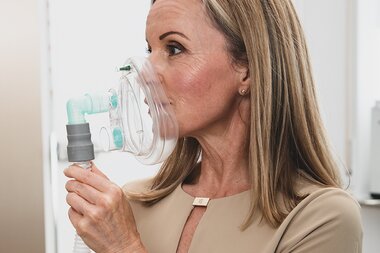Discover an innovative form of altitude training without having to climb a mountain – Intermittent Hypoxia-Hyperoxia Therapy (IHHT). This oxygen therapy uses cellular training to improve your cell metabolism and regeneration, thus sustaining your health and performance in the long term.
Altitude training for healthy mitochondria
Our body consists of about 80 trillion cells, each with its own tiny "power plants" – the mitochondria. These provide the energy our body needs daily. Due to various factors such as medication, stress, environmental pollutants, unhealthy diet, or sleep disorders, mitochondria lose their efficiency, leading to energy deficiency in daily life. Altitude training promotes the regeneration and self-healing of our mitochondria, initiating processes in the body that strengthen and assure energy production.
How does IHHT work?
The cellular training is conducted comfortably lying down with a breathing mask that alternates between delivering oxygen-poor and oxygen-rich air. This alternation destroys worn-out "old" mitochondria and promotes the proliferation of healthy, physiologically "younger" mitochondria.
Furthermore, this therapy is free of side effects and completely painless!





